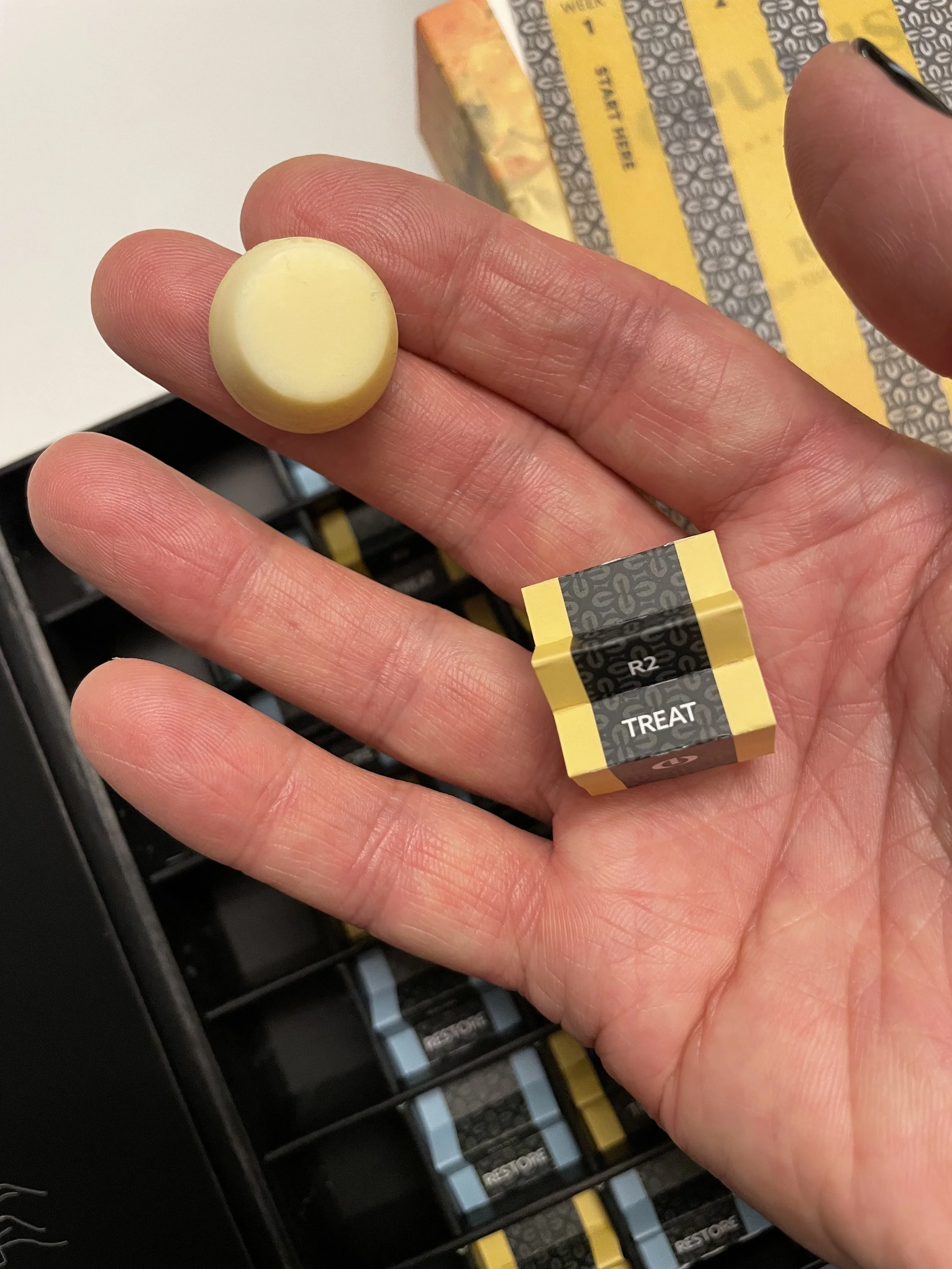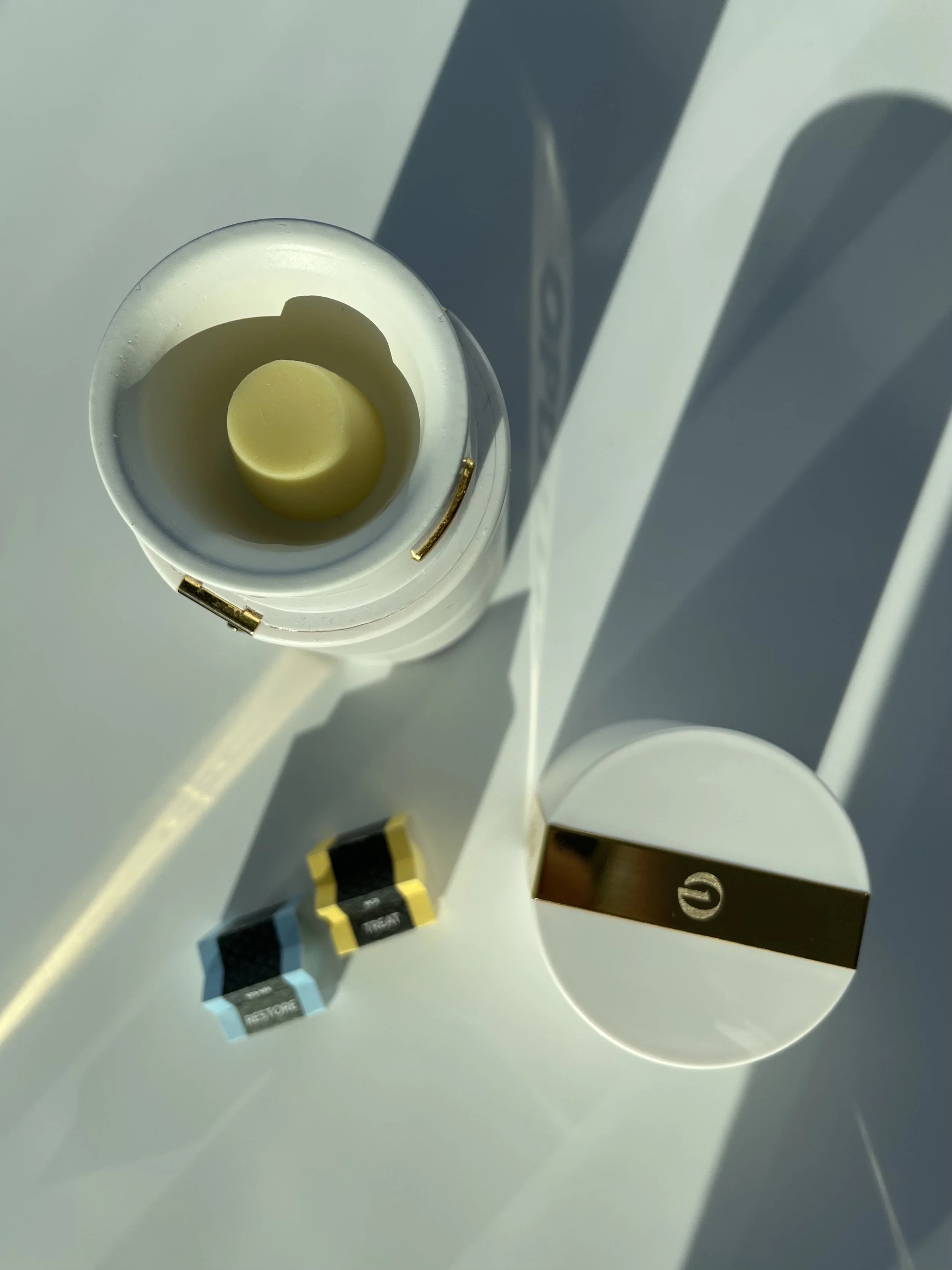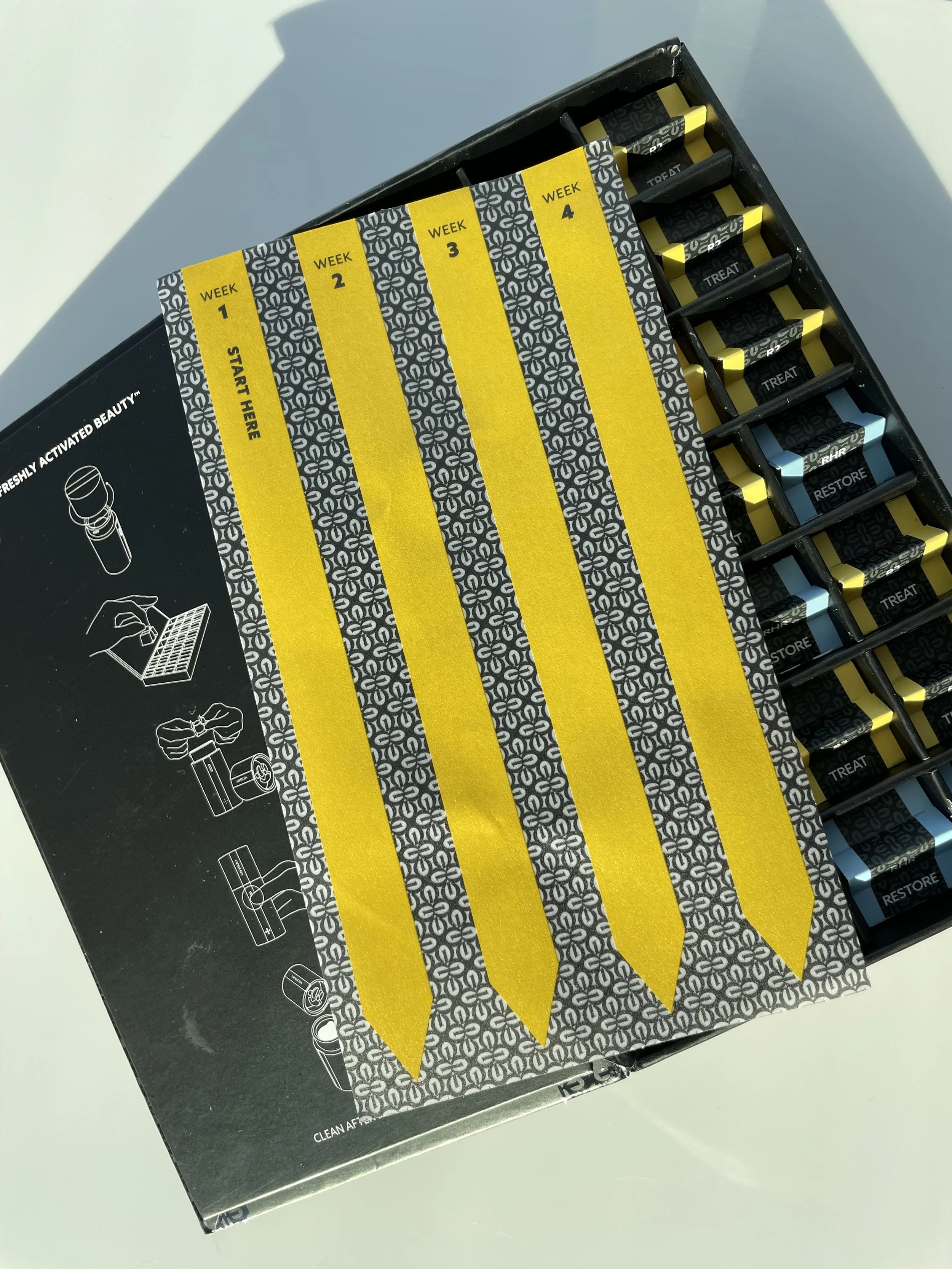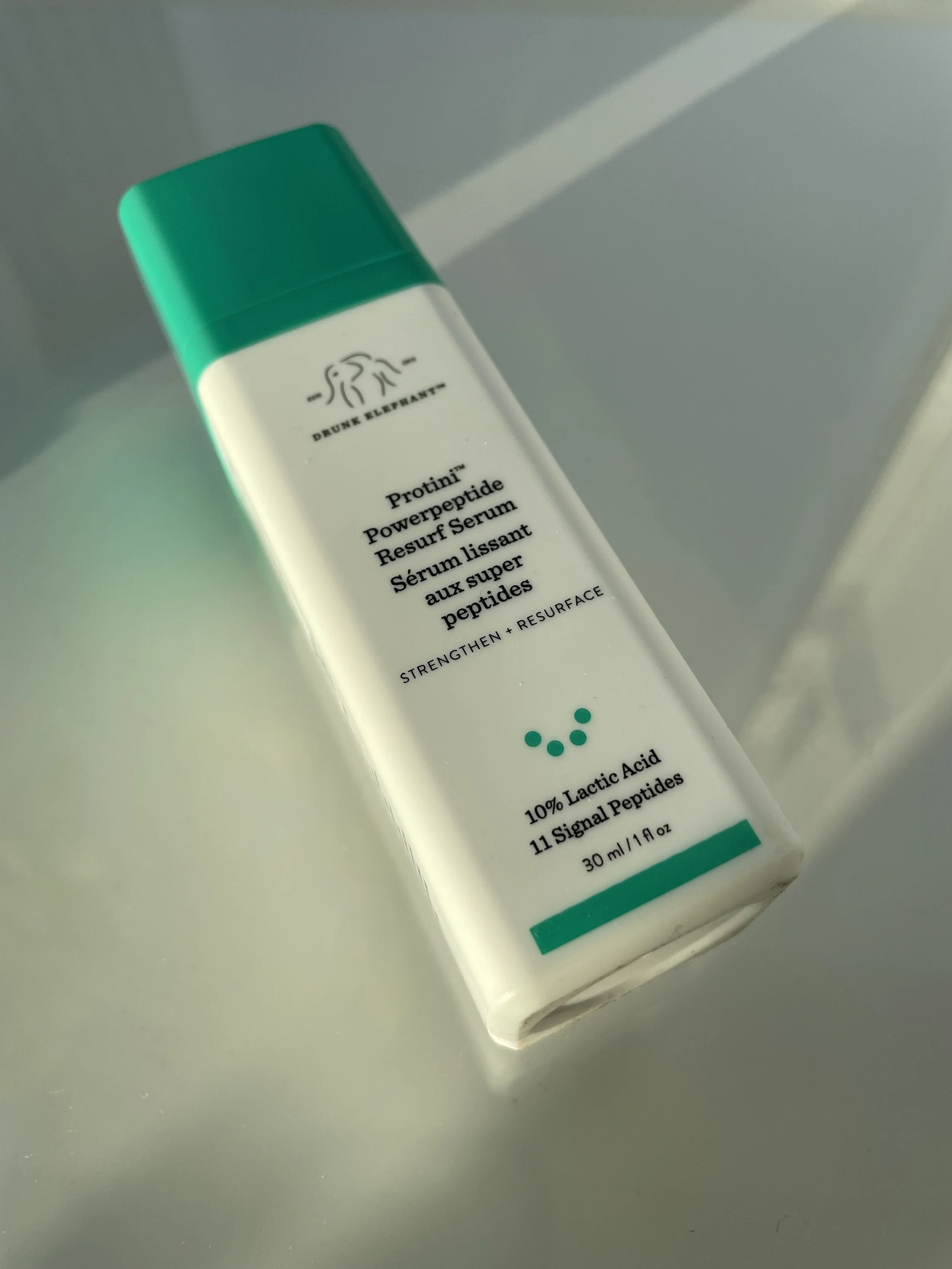OPULUS BEAUTY LABS: THE COOLEST RETINOL INNOVATION I’VE EVER SEEN! BEST RETINOL FOR FACE, BEST RETINOL FACE CREAM, BEST ANTI-AGING CREAM
OPULUS BEAUTY LABS | ACTIVATOR AND RETINOL REGIMEN
I’ve always got my eye out for real skincare innovation — products that deliver something truly unique, in a new way, without big budget marketing spin built around a tenuous story.
Each year, one of these standout products becomes the Skincarma Product of the Year. This past year, the 2021 Skincarma Product of the Year was an unusual organic, 100% natural plant-medicine serum from the innovative Herbal Face Food brand.
If you’re curious about what elevates one of the 500 or so products I try each year to status as the best skincare product, be sure to catch my blog article titled, The 2021 Skincarma Product Of The Year: Herbal Face Food’s The Serum I Radical Youth Concentrate. And, check out each of the Skincarma Products of the Year here.
While I joke that Herbal Face Food’s The Serum I could perhaps be made with alien technology, the truth is even more unbelievable: it’s made with human ingenuity from plants found right here on Earth.
A mere three weeks into 2022 and one genius product has impressed me so much that it’s already a serious contender for this year’s designation as best skincare product. Sure, it’s premature, but that doesn’t diminish the fact that I’m blown away by this new Retinol innovation from OPULUS Beauty Labs. It’s like nothing I’ve ever experienced before — and takes Retinol to a whole new level.
I haven’t always been a fan of Retinol and am guilty of being one of those people who just doesn’t stick to it. I regret that because there are no anti-aging ingredients that even come close to Retinol’s clinically proven efficacy. The truth is, for the treatment of surface line and wrinkles, Retinol is in a class of its own.
My first experience with Retinol was like playing with fire. I had no idea what I was doing at the time and I overdid it, leaving my skin red, raw and Retinol-worn for days. Retinol is like that. You have to proceed with caution. Many people build up a tolerance for it that allows them to use it daily. Not me. I can generally use an effective Retinol treatment once, sometimes twice, a week. Like so much in life, you have to find your balance.
But my personal experience with it doesn’t take away from the fact that Retinol is the gold standard in anti-aging. And, alongside a great sunscreen, a solid Retinol treatment that works for you (and that you stick with!) can and will help to treat multiple skin-aging conditions.
What is Retinol and what makes a face cream or serum with Retinol the best wrinkle treatment in your skincare arsenal?
What Is Retinol and What Does Retinol Do for the Skin?
It’s commonly accepted that Retinol and retinoids, more specifically, are the gold standard in anti-aging. Like Vitamin C and Niacinamide (Vitamin B3), the Vitamin A derivative has multiple pro-skin health, anti-aging benefits. Among them are the smoothing of lines and wrinkles, potent antioxidant defense and visible skin firming. As with Niacinamide, topical retinoids — as all derivatives of Vitamin A are referred to — can even minimize the appearance of pores and defend skin against aging environmental damage.
There’s a superb piece on retinoids by the experts on the Paula’s Choice Research Team titled, The Complete Guide To Retinol: The Anti-Aging (And Anti-Acne) Hero — which you can catch here. Here is what I found most salient:
Retinol is classified as a Cell-Communicating Ingredient, which means that it can tell a skin cell how to behave. Retinol ‘tells’ developing skin cell in the lower layers of the skin – called the dermis, to develop normally, instead of a sun-damaged or genetically malformed skin cell. This is how, over time, Retinol can address multiple skin concerns.
Another way Retinol works is also by telling the older cells in the upper layer of skin to die quicker which in turn allows the newer, healthier skin to surface faster. This quicker skin cell turnover rate, paired with cell communicating abilities is what makes Retinol such a superstar!
There are many derivatives and strengths of retinoids available in both over-the-counter (OTC) and prescription products today. The term “Retinol” is the name of the purest form of Vitamin A, and used most often to refer to the non-prescription version of Retinoids.
However, Retinol itself is not active. It has to go through a conversion process in the skin to get to the active form which is then usable by the skin.
Retinyl Palmitate –> Retinol — > Retinaldehyde –> All-Trans-Retinoic Acid (Tretinoin)
There are many forms of retinoids used in skincare today and it can get confusing. Brands and their formulators have multiple format options in seemingly infinite concentrations, depending on the formulation and the product’s claims positioning.
Following is a breakdown of the most common forms of retinoids with a brief description of its unique benefits and qualities.
Retinyl Palmitate
This form of Vitamin A is created by combining Retinol, or pure Vitamin A, and palmitic acid – a saturated fatty acid derived from palm oil. Retinyl Palmitate is actually naturally occurring in the skin. Because of the lengthy conversion process required within the skin, it’s the least effective of the retinoids. As the weakest form, it’s also generally the most well tolerated.
Retinyl Palmitate gets a bad rap and is on the clean beauty ingredient hit lists of both Sephora and Credo, meaning a formula that contains it cannot be classified as “clean”. According to the experts on the Paula’s Choice Research Team, the claims that it’s unsafe are “based on a study from nearly 20 years ago that has never been reproduced or tested under real-life conditions such as how people use sunscreens that contain this ingredient.”
Retinol
The term “retinol” has become the catch-all for all forms of retinoids in skincare marketing. To be exact, Retinol is the name for the entire vitamin A molecule and the purest form of the antioxidant vitamin. While its anti-aging benefits are proven, it also has legitimate downsides; notably, Retinol can cause extreme sensitization, irritation, redness, dryness and unsightly flaking of the skin.
What causes Retinol irritation? Well, in order to achieve the unparalleled results of Retinol, the molecule must go through a lengthy molecular transformation in the skin as it converts to retinoic acid. It is this conversion process that causes the significant downsides associated with Retinol.
Ironically, while it’s known for causing skin sensitivity, Retinol is also quite sensitive itself. It needs to be packaged in an opaque, air-tight pump as it easily degrades in the presence of light and air. Just like its BFF Vitamin C!
Retinaldehyde (Retinal)
Retinal is even more potent and effective on the retinoid scale than Retinol itself. Interestingly, “Retinaldehyde has promise in being an anti-acne treatment, without the same harsh side effects of its prescription cousins.”
Because it is perhaps the most expensive of the retinoid class, it’s seldom used in topical skincare products — and is reserved for the savvy marketers who want their Retinol treatment to sound unique and to boast the highest efficacy without a prescription. The default is most often to formulate with the less expensive Retinol. Because of its higher potency, Retinaldehyde is used in lower concentrations, which can give the impression that the formula is weaker from a marketing perspective.
WATCH MY VIDEO REVIEW
THE OPULUS BEAUTY LABS RETINOL SYSTEM – THE COOLEST RETINOL INNOVATION I’VE EVER SEEN
ON MY YOUTUBE CHANNEL HERE
Retinyl Retinoate
This synthetic form of Vitamin A is part of a new generation of retinoids. Because of its slower conversion in the skin into Retinoic Acid, studies have shown it to be less problematic for skin than Retinol and pure form of topical Retinoic Acid — more commonly known as Tretinoin or Retin-A.
Because of the serious downsides of using Retinol, Retinyl Retinoate may become increasingly popular in the years ahead.
Hydroxypinacolone Retinoate (HPR) or Granactive Retinoid
Marketed as Granactive Retinoid, Hydroxypinacolone Retinoate (HPR) is the newest and most promising member of the class of anti-aging retinoids. HPR is an ester of retinoic acid with benefits on par with prescription-strength retinoic acid, commonly known as Tretinoin or Retin-A. The greatest benefit is that HPR is more readily tolerated by the skin, with none of the side effects of Retinol or retinoic acid — including irritation, sensitivity, dryness and flakiness.
How is it possible to have the upside without the downside? In order for the skin to benefit from Retinol, the Vitamin A molecule goes through a transformation process as it converts to retinoic acid in the skin. It is this conversion that leads to the irritation common to Retinol. Hydroxypinacolone retinoate does not require a lengthy conversion in order to achieve the sought-after anti-aging benefits of Retinol, making it far more tolerable.
Tretinoin / Retin-A
With Retinyl Palmitate at the low end of the retinoid scale, Tretinoin (or Retin-A) is at the exact opposite end — the strongest of the retinoids known as retinoic acid, the generic name for synthetic Vitamin A. Tretinoin is only available by prescription in most countries — except notably, Mexico, where its access is quite pervasive. Even I have been caught up in grabbing tubes of Retin-A at the airport before my flights home.
While Tretinoin is commonly used to treat signs of aging including fine lines, wrinkles and dark spots, the versatile medication is also an effective treatment for acne and sun-damaged skin. According to the Healthline website, “It may sound counterintuitive, but tretinoin works by irritating the skin. Tretinoin is able to speed up the life cycle of skin cells. It makes them divide faster and die faster, so newer, healthier cells can take their place.”
Opulus Beauty Labs’ Retinol+ Starter System with Activator and Retinol Regimen
Indeed, the OPULUS Beauty Labs activator device and Retinol regimen are pure genius — like nothing I’ve ever experienced before in skincare. This new innovation takes Retinol to a whole new level with enhanced efficacy and the best means for optimizing skin’s Retinol tolerance and in so doing, minimizing the irritation common to Retinol use.
You are probably super curious, wondering what this futuristic device and candy-like pod are. Well, they’re a first-of-a-kind anti-aging system that creates a fresh-activated Retinol treatment at your bathroom sink.
The OPULUS Beauty Labs program comes with an activator, or mixing and heating unit, and a month supply of Retinol treatments. The device itself, the OPULUS Activator, heats up to 107 degrees, melting the Retinol-infused “Opoule” treatments to create a warm, soothing, freshly made anti-aging night cream.
I’ve been treating myself to a nightly OPULUS ritual for approximately three months now — in what feels like my very own miniature skincare lab experiment in my Brooklyn apartment. I could be forgiven for thinking I was on the Starship Enterprise on some nights. It’s that cool!
How does the OPULUS Beauty Labs system work?
Well, OPULUS created what the brand terms a “ramp up” Retinol regimen that’s broken out into 28 days with alternating yellow and blue Opoule treatments. The numbered system both spreads out days you’re applying Retinol and assures greater compliance. I know first-hand that it works because I’ve used it religiously for several weeks now — going back to last fall.
The cute little yellow pods are infused with pure Retinol at one of three concentrations. selected based on your personal experience with Retinol: .025%, .05% and .1%.
Each yellow pod also contains a pro-skin health blend of replenishing ceramides, Bakuchiol and multiple non-fragrant plant oils that soothe and nourish the skin, helping to buffer against potential irritation on your Retinol nights.
The powder blue Opoules are for Retinol “off nights;” they contain no Retinol and are ideal for restoring, rehydrating and rejuvenating the skin. Think of them as a boost of skin nourishment and moisture that prevents dryness and rebalances the skin in between Retinol use.
You simply pop one of the scheduled Opoules into the space-aged OPULUS Activator, seal the cap, and turn the device on. You’ll begin to hear a steady hum as the heating unit inside powers up.
Over the course of the minute waiting by the sink, the device melts and blends the inserted Opoule and whips it into a rich, milky yellow or blue cream. Once the activator powers down, you have a deliciously warm and soothing single-use treatment.
If you’ve never had the opportunity to apply a warm, freshly activated cream to your face, you can only imagine the experience. The only time I’ve experienced anything similar was during a spa treatment in Costa Rica where the facialist custom blended a warm botanical pack and applied it to my face. I’ve literally never tried a warm face cream — and certainly not in the comforts of home.
The OPULUS experience is skincare nirvana.
And through the genius of the OPULUS ramp-up system, you never see the irritation common to Retinol — at least I haven’t in the weeks since I first began using it.
WATCH MY VIDEO REVIEW
THE OPULUS BEAUTY LABS RETINOL SYSTEM – THE COOLEST RETINOL INNOVATION I’VE EVER SEEN
ON MY YOUTUBE CHANNEL HERE
What I like about it: The OPULUS Beauty Labs Retinol system is the most innovative Retinol treatment that I’ve ever come across. It’s pure genius in the way that it delivers Retinol to the skin. But what’s so exceptional to me is the way in which it assures compliance by making it easy and even fun to stick with. I’ve loved the results I’ve seen — and love even more the lack of irritation. I feel like I finally have a Retinol treatment I can trust and manage.
What I don’t like about it: At $395 to start, it’s a costly investment. But once you’ve got your Activator device, you simply need to replenish the Opoule treatments each month. A 4-week supply is $165 or just under $6 per day. For most people, that’s still a lot for a skincare treatment — even a great one. The brand recently began offering a 3-month subscription option that includes the entire system (the Activator and monthly delivery of the Retinol regimen) at a total cost of just $165/month.
Who it’s for: All skin types, except perhaps very oily or severely acne prone.
SHOP THE BLOG: Purchase the OPULUS Beauty Labs - THE RETINOL+ STARTER SYSTEM for $395 here.
WATCH MY VIDEO REVIEW
THE OPULUS BEAUTY LABS RETINOL SYSTEM – THE COOLEST RETINOL INNOVATION I’VE EVER SEEN
ON MY YOUTUBE CHANNEL HERE
WATCH MY VIDEO REVIEW OF
MY WINTER SKIN SAVIOR: SKINFIX BARRIER+ LIPID REPLENISHING SKINCARE
ON MY YOUTUBE CHANNEL HERE
WATCH MY VIDEO REVIEW
THE YEAR’S BEST VITAMIN C SERUMS WITH PAULA'S CHOICE, SUNDAY RILEY, THE INKEY LIST AND MORE!
ON MY YOUTUBE CHANNEL HERE
WATCH MY VIDEO REVIEW
COOL CLEAN FACIAL SUNSCREENS TO KEEP US SAFE AND SMILING IN THE SUN!
ON MY YOUTUBE CHANNEL HERE
WATCH MY VIDEO REVIEW OF
SKINCARE HACKS: GLYCOLIC ACID IS THE NATURAL DEODORANT THAT WORKS!
ON MY YOUTUBE CHANNEL HERE
The Ingredient List of the OPULUS Beauty Labs Retinol Night Cream Opoule (yellow pod):
C10-18 Triglycerides, Polymethylsilsesquioxane, Caprylic/Capric Triglyceride, Tribehenin, Distarch Phosphate, Silica, Glyceryl Laurate, Tristearin, Glyceryl Stearate Citrate, Tetrahexyldecyl Ascorbate, Bakuchiol, Ceramide III, Retinol, Hydrogenated Olive Oil, Polyhydroxystearic Acid, Hippophae Rhamnoides (Sea Buckthorn) Fruit Oil, Polyglyceryl-3 Polyricinoleate, Olea Europaea (Olive) Fruit Oil, Tocopherol, Lecithin, Olea Europaea (Olive) Oil Unsaponifiables, Rosmarinus Officinalis (Rosemary) Leaf Extract.
The Ingredient List of the OPULUS Beauty Labs Overnight Mask Opoule (blue pod):
C10-18 Triglycerides, Polymethylsilsesquioxane, Glycerin, Propanediol, Water, Cetearyl Alcohol, Microcrystalline Cellulose, Moringa Oil/Hydrogenated Moringa Oil Esters, Lauryl Laurate, Allantoin, Tetrahexyldecyl Ascorbate, Carnosine, Heptapeptide-7, Hydrogenated Starch Hydrolysate, Tocopherol, Aphanizomenon Flos-Aquae Extract, Sodium Hyaluronate, Hydroxyethyl Acrylate/Sodium Acryloyldimethyl Taurate Copolymer, Glyceryl Stearate Citrate, Coco-Glucosides, Lecithin, Citric Acid, Xanthan Gum, Vanillin, Melia Azadirachta Leaf Extract, Melia Azadirachta Flower Extract, Corallina Officinalis Extract, Coccinia Indica Fruit Extract, Solanum Melongena (Eggplant) Fruit Extract, Aloe Barbadensis Flower Extract, Simmondsia Chinensis (Jojoba) Seed Oil, Ocimum Sanctum Leaf Extract, Ocimum Basilicum (Basil) Flower/Leaf Extract, Curcuma Longa (Turmeric) Root Extract.

















